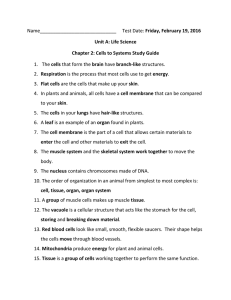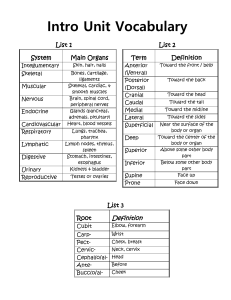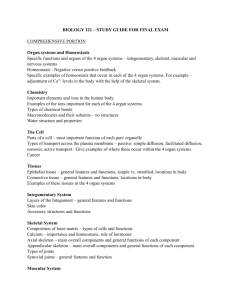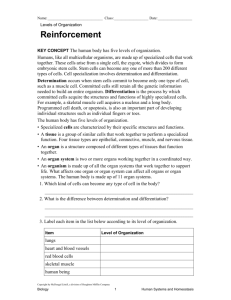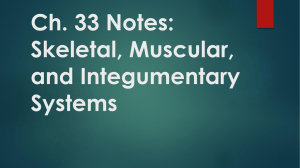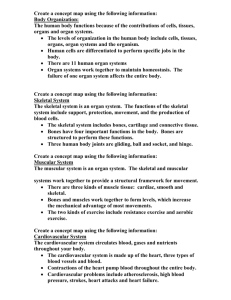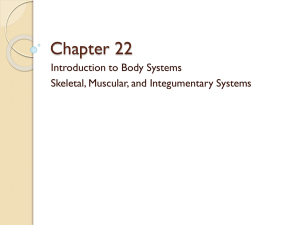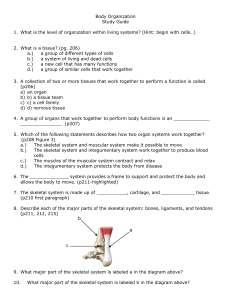Essential
advertisement
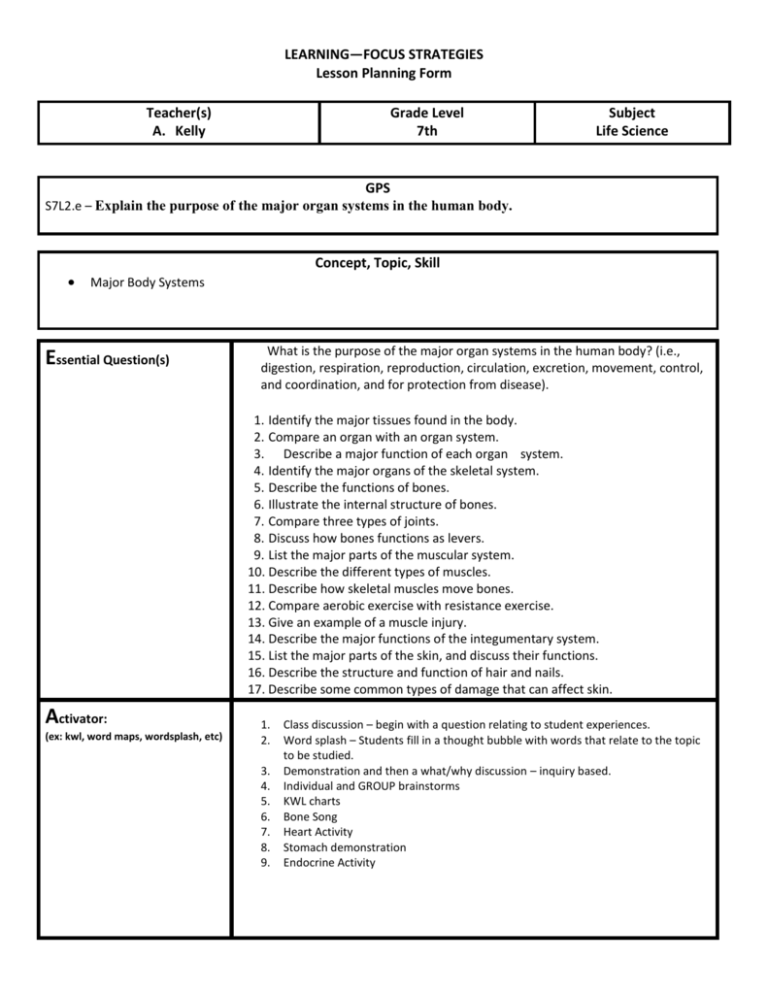
LEARNING—FOCUS STRATEGIES Lesson Planning Form Teacher(s) A. Kelly Grade Level 7th Subject Life Science GPS S7L2.e – Explain the purpose of the major organ systems in the human body. Concept, Topic, Skill Major Body Systems Essential Question(s) What is the purpose of the major organ systems in the human body? (i.e., digestion, respiration, reproduction, circulation, excretion, movement, control, and coordination, and for protection from disease). 1. Identify the major tissues found in the body. 2. Compare an organ with an organ system. 3. Describe a major function of each organ system. 4. Identify the major organs of the skeletal system. 5. Describe the functions of bones. 6. Illustrate the internal structure of bones. 7. Compare three types of joints. 8. Discuss how bones functions as levers. 9. List the major parts of the muscular system. 10. Describe the different types of muscles. 11. Describe how skeletal muscles move bones. 12. Compare aerobic exercise with resistance exercise. 13. Give an example of a muscle injury. 14. Describe the major functions of the integumentary system. 15. List the major parts of the skin, and discuss their functions. 16. Describe the structure and function of hair and nails. 17. Describe some common types of damage that can affect skin. Activator: (ex: kwl, word maps, wordsplash, etc) 1. 2. 3. 4. 5. 6. 7. 8. 9. Class discussion – begin with a question relating to student experiences. Word splash – Students fill in a thought bubble with words that relate to the topic to be studied. Demonstration and then a what/why discussion – inquiry based. Individual and GROUP brainstorms KWL charts Bone Song Heart Activity Stomach demonstration Endocrine Activity Key Vocabulary to Preview Homeostasis, tissue, epithelial tissue, nervous tissue, muscle tissue, connective tissue, organ, skeletal system, compact bone, spongy bone, cartilage, joint, ligament, muscular system, smooth muscle, cardiac muscle, skeletal muscle, tendon, ligament, integumentary system, sweat glands, melanin, epidermis, dermis, hair follicle, cardiovascular system, blood, arteries, capillaries, veins, pulmonary circulation, systemic circulation, blood pressure, lymphatic system, lymph, lymph nodes, thymus, spleen, tonsils, respiration, respiratory system, pharynx, larynx, trachea, bronchi, alveoli, digestive system, esophagus, stomach, small intestine, pancreas, liver, gallbladder, large intestine, urinary system, kidney, nephron, urine, urinary bladder, central nervous system, peripheral nervous system, neuron, impulse, receptor, nerve, brain, reflex, endocrine system, gland, hormone, immune system 10. 11. 12. 13. 14. 15. Flash cards for vocabulary words or a vocabulary flip book. Note-taking with explanations and questioning. Demonstrations by teacher with predictions and discussions from students. Inquiry-based lessons with students discovering answers given a minimum of information. Lab activities with lab reports written in the correct form. Interpreting, analyzing graphs, and creating graphs using a set of data. Use of Activboard(flipcharts, websites, etc) by teacher and students. Practice using the scientific method. Illustrations, foldables, charts, etc., that will explain the students understanding of the concept being learned. Use of Quia activities to study vocabulary. Guided reading with a graphic organizer. Answer comprehension questions using the graphic organizer. CLOZE with Power Point presentations www.brainpop.com Body systems webquest Summarizer Section Reviews Numbered Heads Study Guide Chapter Assessment Answer EQ Vocabulary review/ QUIA Ticket out the door. Tell a neighbor Extended Thinking 1. 2. 3. Go over key vocabulary terms, and relate to real-world objects, pictures, ect. Compare/contrast infectious disease with genetic disorder Research of infectious disease Teaching Strategies Include Graphic Organizer(s) (Which one and how will it be used?) 1. 2. 3. 4. 5. 6. 7. 8. 9. Cloze notes Highlighted key facts Extra Time Reduced assignments Closed Captioning

